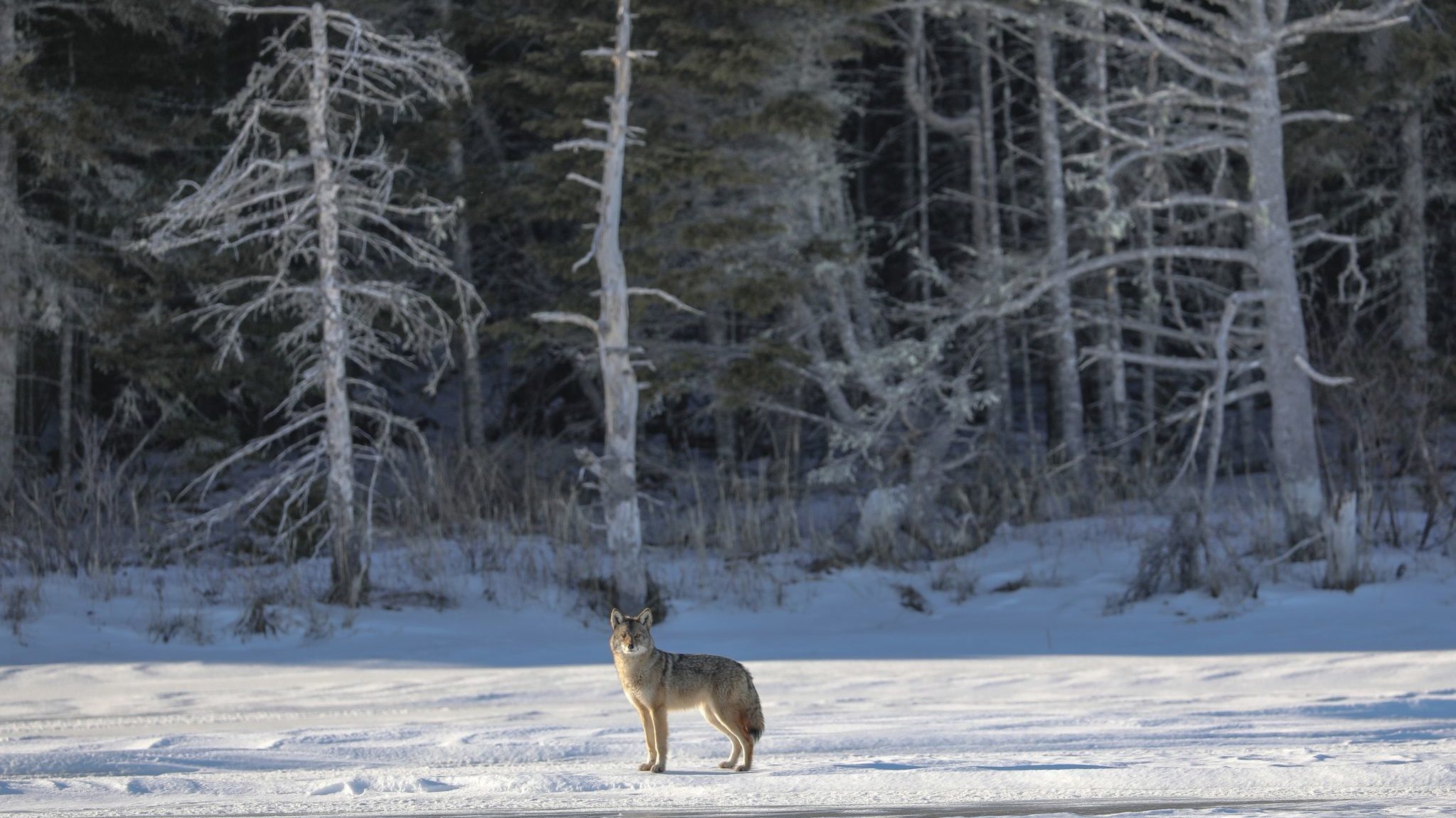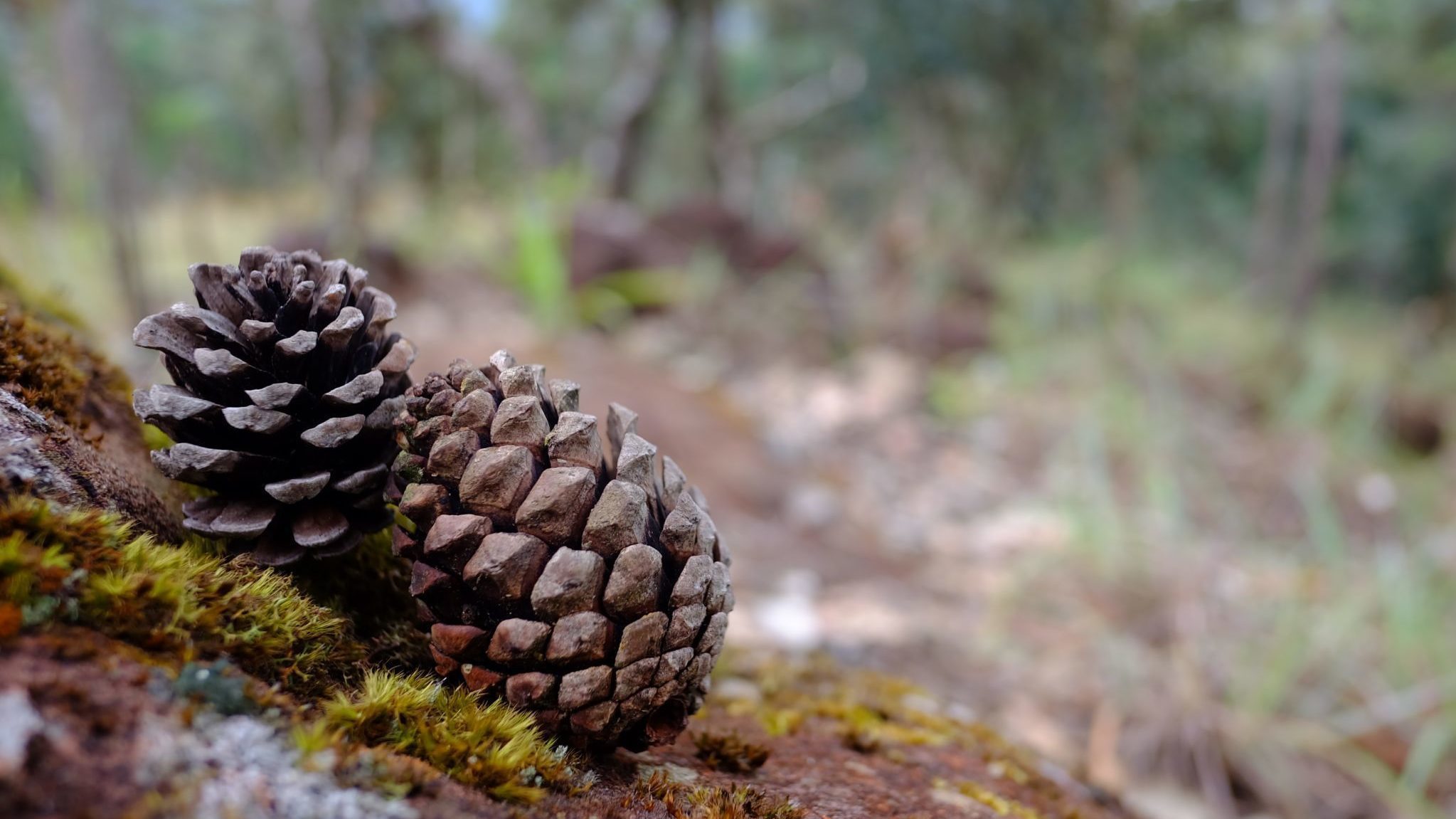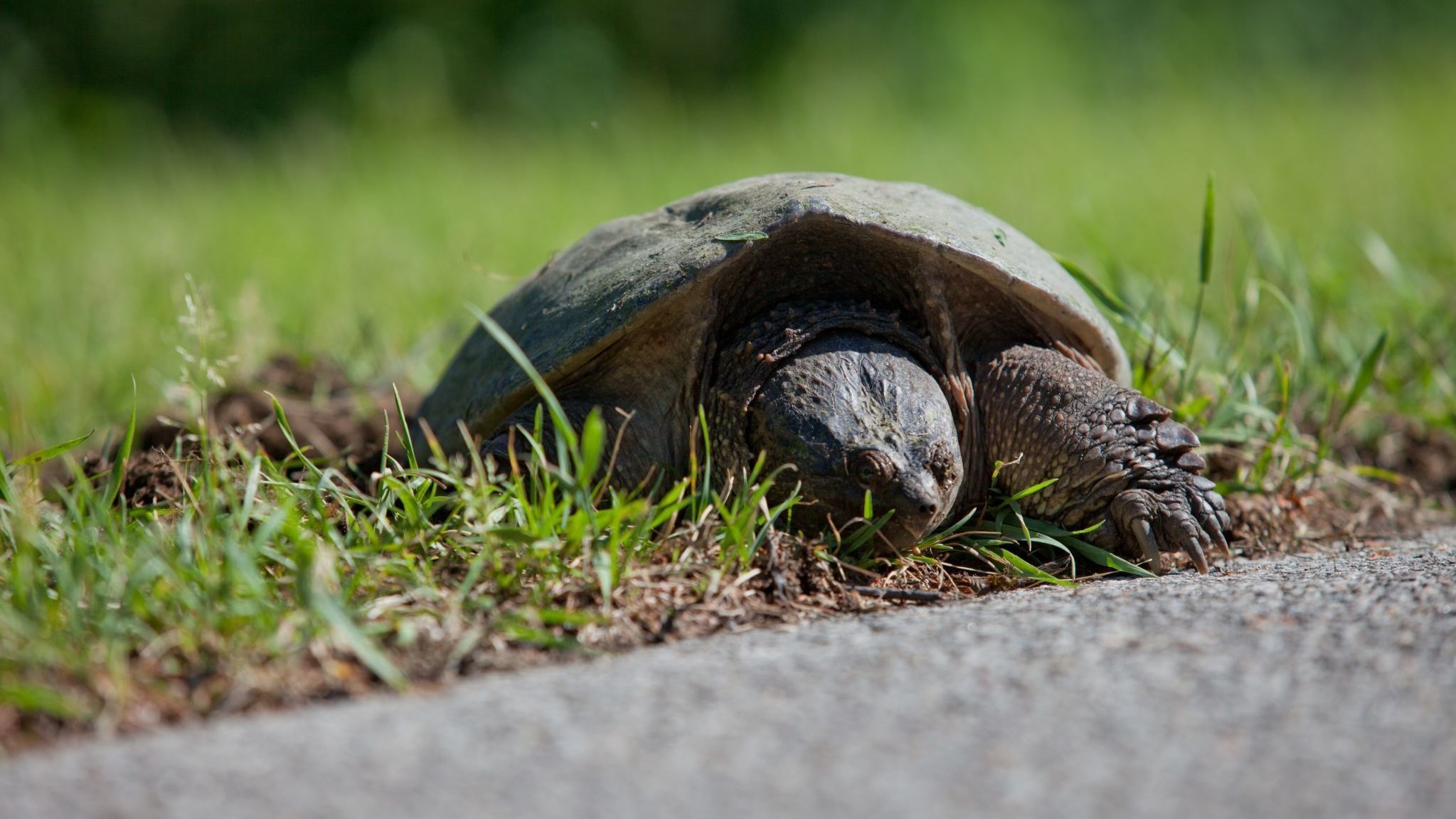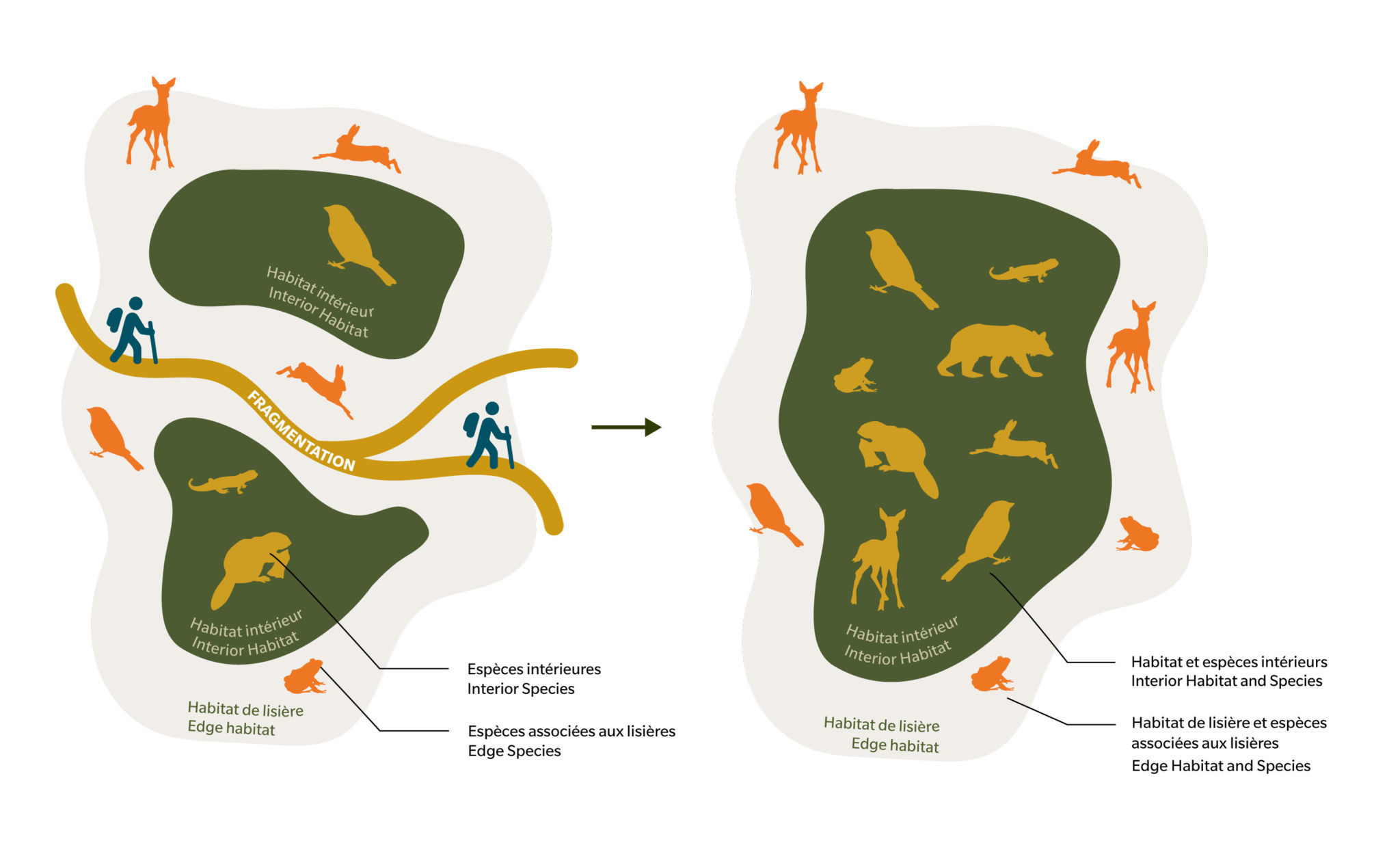Author: Catherine Verreault, Director, Quebec urban lands and Gatineau Park
This blog features Gatineau Park's most loyal and plentiful visitors, the ones who come by the thousands, 24 hours a day, 365 days a year. Who could they be? None other than the animals and plants!
Gatineau Park is…
- more than 50 species of mammals
- close to 230 species of birds
- several species of reptiles and amphibians and thousands of invertebrates
- more than 1,000 species of plants and about 50 types of trees
All these species are continually on the move. How do they get around and why is it so important? This blog takes a look at the world of biodiversity, ecology and conservation, and how it connects to human activity more than you may realize.
Corridors for wildlife…

Did you know that a wolf needs at least 200 square kilometres of territory, and a bear needs at least 100 km2? Like many other species, wolves and bears depend on what are called “ecological corridors”.
Ecological corridors are parts of an area that connect different natural environments. They can be natural watercourses such as rivers and creeks, forested spaces, hedges that function as windbreaks, forests and fields. They allow animals to roam from one environment to another, especially to reproduce with genetically diverse mates.
Ecological corridors are therefore essential for ensuring genetic diversity within a species, and for ecosystem diversity. The richer and more diversified an ecosystem, the stronger and more resilient it is.
…and for plants!

Plants use ecological corridors too. That’s right, plants!
To colonize new portions of land and find better growing conditions, plants in Gatineau Park also travel. How? With the help of allies. Animals and insects transport impressive quantities of pollen, seeds and nuts.
Just think about squirrels and the vast number of seeds and pine cones they stored all over the forest — or a bear with burrs in its fur, or that travels several kilometres and leaves behind seeds from the fruit it has eaten when it defecates.
Invisible barriers

Ecological corridors are very important, but also fragile. A road, a fence or a railway track, can create a physical barrier for animals, and block them from moving between different natural environments.
Psychological barriers can create the same result and isolate environments. These barriers include trails and human presence.
Some animals, such as the lynx, are especially sensitive to noise and odours created by the presence of humans in their territory. For some animals, like centipedes, turtles or mice, crossing a trail can be like trying to cross a multi-lane highway!
Concrete actions
Unofficial trails in Gatineau Park contribute to habitat fragmentation when they are regularly used. The repeated presence of people on these trails can also inhibit to movement by more timid species like fishers and weasels. These animals can sense the presence of humans as a threat long after a person has passed by on a trail, and they will not dare approach it.
You can help protect the park and these species by using only official trails.
The NCC is working actively to limit barriers and conserve connectivity between environments through partnerships and projects like the Responsible Trail Management project.
Protecting ecological corridors is also one of the conservation priorities of the Gatineau Park Master Plan.
